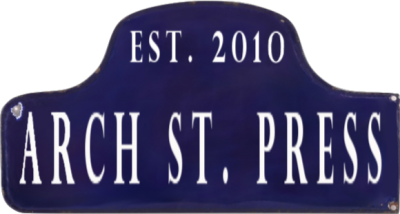Staying Indie in the Age of Amazon
By Colin Battis
In 2007, Amazon released the first Kindle e-reader. It sold out in less than six hours. This was the start of what many believed would be the death of printed books. Amazon had already begun shaking up the business of bookselling by making it easier to have reading delivered than to go out and browse the shelves of the nearest bookstore. Then, with the Kindle — which was quickly joined by the Nook, the iPad, and a swarm of less successful e-readers — people wouldn’t even need to buy paper books.
he future seemed dark for the printed word. The popular bookstore chain Borders went out of business without warning. Publisher profits plummeted, as e-books started capturing more and more of the market. Newspapers were filled with authors and columnists making pessimistic predictions.
Luckily, the end of paper books and comfortable neighborhood bookshops failed to arrive. The past five years have seen a lot of growth for the book. Compared to the 1,651 independent bookstores that were clinging to life in 2009, there are now 2,524 indie bookstores in the US. Still, things aren’t the way that they used to be. While independent sellers are doing well, the enormous chain Barnes & Noble has struggled to keep their footing. The “Big Five,” publishing houses in New York that have dominated book publishing for decades, have seen losses over the years that are shaking their hold on the publishing industry.
With Amazon and the Internet on the scene, the old ways of doing things are threatened like never before. Today, the book market is wider and more diverse than most could have imagined. Thanks to e-books and new printing methods, many writers unable to find a seat at the Big Five’s table have been able to publish their own work anyway.
Consider Philadelphia as an example. The city is home to a thriving literary community, one with deep roots. Many writers who hope to find mainstream success move to New York City, where they can be close to the agents and editors at the heart of the publishing industry. Those who stay in Philly, which lacks a powerhouse of its own where writers can score major book deals, tend to embrace the indie scene.
I went out to talk to some of the publishers and booksellers who are part of literary Philadelphia, to ask them a question — how do they keep their head above water in a business that has become so tough? What I found was that for these people on the margins of the market, it isn’t enough to have a business strategy. They need a personal reason to stay in the game.
For David Castro, the founder of Arch Street Press, that reason is his lifelong mission of advancing social entrepreneurship and leadership. Castro founded a nonprofit called the Institute for Leadership Education, Advancement, and Development, or ILEAD. “I had an interest not just in leadership development as it stood, but in evolving leadership into the future,” he said.

Wanting to be part of that change, Castro wrote a book, and didn’t know where to publish it. That made him interested in the business model of publishing.
“First of all, it’s so New York-centric,” he explained. “It’s heavily driven by a phalanx of editors and PR people, and I was not convinced. I talked to people in the industry who told me that most of what they publish didn’t make money, and the things that did only made money because people were already throwing lots of money behind them… I started to look at the whole publishing thing and I said this is kind of ridiculous.” Continue reading
